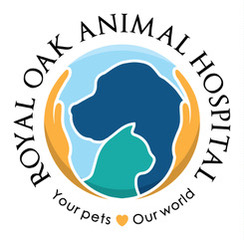Polyomavirus Infection in Birds
What is avian polyomavirus (APV) infection?
 Avian polyomavirus infection (APV) belongs to the Polyomaviridae family of viruses. Species particularly susceptible to APV infection include budgies, eclectus parrots, caiques, and hawkhead parrots. APV can cause benign feather lesions in budgies, slow crop emptying in newly weaned parrots, hemorrhages on the skin, or death.
Avian polyomavirus infection (APV) belongs to the Polyomaviridae family of viruses. Species particularly susceptible to APV infection include budgies, eclectus parrots, caiques, and hawkhead parrots. APV can cause benign feather lesions in budgies, slow crop emptying in newly weaned parrots, hemorrhages on the skin, or death.
How do birds become infected?
The most common route for transmission is direct exposure of non-vaccinated birds to a bird infected with APV or a non-symptomatic carrier. Humans that have handled a sick bird or carrier bird, used feeding utensils from sick baby birds, or touched non-sanitized food and water bowls can carry the virus on their person and infect other birds. Feather dander and bodily fluids from infected birds are also a frequent source for transmission to other birds.
What are the clinical signs of APV infection?
Infected birds generally present with clinical signs 7–14 days after exposure to the virus. Some infected birds may show depression, anorexia, weight loss, delayed crop emptying, regurgitation, diarrhea, wet droppings, dehydration, difficulty breathing, abdominal enlargement, hemorrhagic areas under the skin, and tremors for 12–48 hours before death.
Mortality can be high, reaching 100% in birds less than 15 days old. Most juvenile and newly weaned parrots infected with APV die quickly, with no clinical signs.
Budgerigars that recover from the infection are often left with abnormal feathers (budgerigar French molt). Birds that recover likely remain carriers and can shed the virus despite showing no signs of illness.
How can I tell if my bird is infected?
Birds, especially baby birds, die quickly with APV. If you have a baby bird that dies suddenly, it should be examined by a veterinarian within 24 hours of death. Either a necropsy (veterinary autopsy) or laboratory testing will be necessary to accurately determine the cause of death. Both sick and healthy birds can be tested using a DNA analysis of whole blood or an oral or cloacal swab. Your avian veterinarian will send these samples to a reference lab for testing.
My bird is healthy. Should it be tested?
Your veterinarian can give you the best advice on whether your bird should be tested. However, if you plan to purchase another bird, both birds should be screened for APV, as either bird can be a carrier without showing signs.
How is APV infection treated?
There is no definitive treatment for APV. Birds with mild hemorrhaging might benefit from vitamin K injections and supportive veterinary care. Often, the disease progresses so quickly that no treatment is effective.
How can I prevent APV infection?
You can help reduce vial contamination of the environment by manually removing droppings and feathers and carefully disinfecting the environment. Make sure the DNA probe test for APV is done on currently owned birds and newly acquired birds before they are put together. Birds can shed the virus intermittently, so several negative tests are required before you can be somewhat certain that a bird is not a carrier. An APV vaccine is available for selected psittacine birds (parrots) to help prevent APV.
© Copyright 2025 LifeLearn Inc. Used and/or modified with permission under license. This content written by LifeLearn Animal Health (LifeLearn Inc.) is licensed to this practice for the personal use of our clients. Any copying, printing or further distribution is prohibited without the express written consent of LifeLearn. This content does not contain all available information for any referenced medications and has not been reviewed by the FDA Center for Veterinary Medicine, or Health Canada Veterinary Drugs Directorate. This content may help answer commonly asked questions, but is not a substitute for medical advice, or a proper consultation and/or clinical examination of your pet by a veterinarian. Please contact your veterinarian if you have any questions or concerns about your pet’s health. Last updated on Apr 10, 2025.


